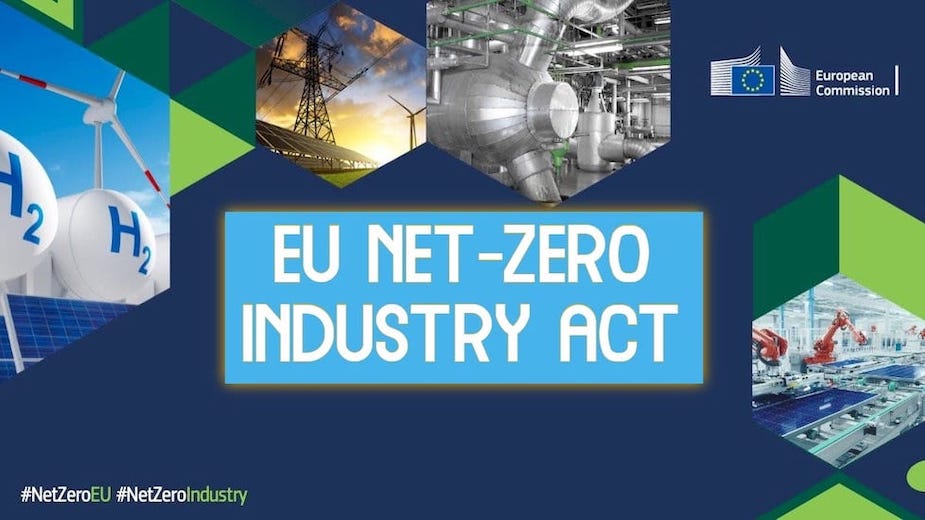European leaders met in Brussels on March 23-24 to launch negotiations over the course of the European Union’s ambition for bold action on climate issues and clean energy scale-up set against its members’ varying resources, shaky economies and the ongoing war in Ukraine.
A potentially far-reaching debate—if short on details for resulting actions—continues about how to overhaul the continent’s energy systems, markets and infrastructure as it develops a plan to reach goals to cut net greenhouse gas emissions by 55% by 2030 and insure that the EU has access to critical raw materials and industrial support needed.
Proposed steps need agreement by EU bodies before they can be launched into action. The push is in response to U.S. moves toward clean energy self-sufficiency, particularly enactment of the 2022 Inflation Reduction Act that includes $369 billion in funds and incentives for domestic production. Thierry Breton, EU internal markets commissioner said earlier this month that the U.S. and China "are engaged in a subsidies race," in comments to Reuters.
“We need a regulatory environment that allows us to scale up the clean energy transition quickly,” Ursula von der Layen, president of the European Council said. “Demand is growing in Europe and globally, and we are acting now to make sure we can meet more of this demand with European supply.”
Europe still largely relies on imports for most of its net-zero technologies, with more than 90% of solar photovoltaic wafers and other components sourced from China, as well as 25% of electric cars and batteries.
Debate focuses on key legislation the Council proposed in mid March under the European Green Deal plan, particularly the Net-Zero Industry Act, which stipulates that at least 40% of key technologies like solar PV and wind power must be manufactured domestically by 2030, with measures to speed, simplify and help finance production, and the Critical Raw Materials Act, which aims to insure domestic supply of needed materials.
The Net-Zero Act sets annual goals to reach by 2030 for EU manufacturing capacities such as 30 GW for solar photovoltaic technologies, 31 GW of heat pumps, 550 GWh of batteries and 10 million metric tons of renewable hydrogen. The council would encourage this by simplifying state aid schemes, setting tax breaks as incentives and accelerated permitting.
An internal EU legislative analysis of the proposal says investment needs between now and 2030 could cost from 52 billion euros to 119 billion euros, based on level of dependence on imports.
Subsidy issues for green technologies are also contentious among member countries, with France and Germany favoring eased government aid rules but smaller nations being less supportive. Creation of an EU-wide European Sovereignty Fund has also been floated.
The question of whether to expand types of nuclear power defined as clean energy has already become contentious. France derives nearly 75% of its electricity from nuclear power, according to the World Nuclear Association, and wants the definition to more broadly include types other than just small nuclear reactors and advanced reactors, as is now the case, says the EU news service Euroactiv.
Meanwhile, some industry groups raise concerns over whether clean energy goals can be reached with technologies that are not yet proven at such a scale.
Christoph Zipf, a spokesman for Brussels-based wind energy trade group WindEurope, says the Green Deal industrial plan may support innovation, but scaling up wind energy in Europe is more about volume. In a mid March brief, group CEO Giles Dickson says the EU bloc "has a big wind energy supply chain today but it’s not big enough to produce those volumes set out in goals." He says details remain unclear on how governments will use proposed "new flexibility to support green industries."
Wolfgang Niedermark, chairman of BDI, the Federation of German Industries, which represents 37 trade groups, told Clean Energy Wire that meeting the Critical Raw Materials Act goals will be tough without a "much-needed funding offensive.” He said U.S. mining companies can write off 10% of their costs under the IRA, a provision "also worth emulating for Europe.”
"There is a growing sense that supply constraints are going to derail or delay the energy transition unless several significant barriers are soon overcome," said S and P Global in reporting industry speaker comments at the first Critical Metals and Minerals Conference, held in London on March 22-23.
But the Biden administration and EU officials now are in talks to possibly allow European companies access to U.S. EV tax incentives in the Inflation Reduction Act related to European minerals used in those made vehicles in North America, Politico reported March 24.





